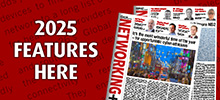08 February 2023
Mike Turner, principal business advisor, customer intelligence, SAS UK & Ireland
The compound effect of the COVID-19 pandemic, the war in Ukraine and the energy crisis has led to a unique situation where companies don’t have a stable base set of data about their consumers to work from in 2023. The challenges emerging in the global economic climate are not built into traditional data modelling, requiring a more innovative approach which accounts for sudden developments.
As part of this, marketers are going to have to be more tactical in how they target customers and understand what their customers want, identifying how to have the right conversations with the right people. So far, we’ve seen many consumers moving away from the latest-and-greatest handset, opting to stick with the device they already have or shop around for a cheaper deal elsewhere, regardless of whether the pay monthly package offers less data or perks.
However, it remains difficult to guess how individuals will budget and spend, even during a time of economic downturn. Research we conducted last year which looked at consumer Christmas spending is a good indicator of this. We found that while many understandably indicated they would be cutting back, a significant 12% revealed that they planned to spend more on gifts. Marketeers at telcos would need to figure out who that 12% is and push new products to them – while being conscious of not irritating other consumers who can’t afford to pay any more.
At the beginning of 2022, YouGov Research found that one in 10 global consumers intended to spend more on telecom services (10%), while the share of those who intended to spend less was almost double (20%). A year later and these percentages will have changed again, as our Christmas research indicates, so understanding at a point in time how to identify which people fit into which groups is vital for success, especially when individuals’ circumstances are constantly changing.
Traditional marketing tactics are no longer going to cut it. Segmenting consumers into large groups based on generalised factors, such as income, is not going to help marketing teams to understand the market drivers of individuals on a mass scale – something that many operators are realising. With outgoings such as energy costs rising, a higher income does not guarantee an individual will be interested in new, pricier handsets.
To achieve personalised marketing on a mass scale, enterprises are investing in advanced analytics and organising large datasets to ensure they can quickly react to changing consumer habits, and market the right products and offers to the right customers - when it suits them best. For one, with the rise of the eco-friendly consumer in recent years, marketers can discover which customers are environmentally conscious when making a purchase and target them with relevant offers effectively.
Data central
With cloud analytics and AI holding the power to unlock insights into consumer behaviour, it is vital telcos have the capabilities in place to handle the huge amounts of data they produce. The rise of the cloud has been key to facilitating this, with technologies evolving to be able to store all data on one platform. This provides the means for a customer data platform which doesn’t require constant, time-consuming, and costly IT projects to move data around - a marketer's dream.
If marketers have become accustomed to tried and tested methods, it may feel easier to put off making the move to adapt to new technology. But with marketing budgets expected to feel the squeeze as companies try to cut costs in 2023, the onus is on them to prove a true return on investment to their enterprises and facilitate more effective marketing to convince customers to buy products and services.
Some are already starting to adapt their strategy. For example, in their winter advert, EE’s messaging and language took into account the context of the cost of living crisis, understanding many consumers are not in a position to buy the latest handset. Instead, EE is offering its customers an annual check-up on their device. This is a great example of how a telco can adapt to meet the current needs of customers while finding potential new sources of revenue.
Standing out from the competition
Predicting the top telecom trends of 2023, Forbes forecasted that artificial intelligence would make one of the biggest impacts as AI tech becomes more sophisticated and the challenges facing telecom operators become more complex. Data is at the centre of all of this.
However, data is only as valuable as providers make it. Running the same python code in a black box expecting different outcomes will not achieve optimum results. Instead, software should allow marketers to adapt and tune analytics in line with market drivers and needs.
With markets across the globe being unstable for the foreseeable future, value has been lost in traditional modelling techniques which are completely reliant on data to be consistent. Understanding individuals’ needs through advanced, real-time data, and then acting upon insights with personalised offers, is a solution which no telco marketer can afford to ignore.
It may be a cliche quote, but amid the uncertainty, knowledge truly can be the key to success.










